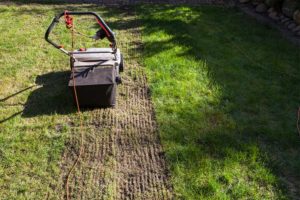What to Plant in July – Best Vegetables For Growing Season

What to plant in march: Vegetable gardening is a great way to save money and add rewarding gardens to your home or office. There are so many things to choose from this time of year. Plant the seeds that will reward you with tender tasty vegetables all season long or plant vegetables that can sustain you through the coldest parts of the year. Spring is the best time to plant annuals because they come fully established and are easier to maintain than perennials. Here are some suggestions of what to plant in march.
What to Plant in April – Vegetable Gardening Tips For April: This is a very warm and wonderful time of year to begin vegetable gardening. Sow your seeds in early spring and start preparing your beds in late March. Always make sure to water thoroughly after sowing your seeds. What to Plant in April also depends on whether you live in an area where perennial grasses may be more desirable, in which case you’ll want to avoid any surprises by mowing them too short in the early spring. Aim to keep the lawn at least one inch tall in the spring.
What to Plant in May – Vegetable Gardening Tips For May: This is the peak month for vegetable garden blooms and harvest. The cool-weather garden will reward you with abundant and delicious vegetable salads, vegetable soup bases, vegetable garnishes and a plethora of great summertime recipes. In addition, planting in May will give you the best vegetables for grilling during the summer months. Aim to get your garden flowers healthy before the onset of frost.
What to Plant in May – Vegetable Gardening Tips for May: Vegetables are very sensitive to frost. Make sure to prepare your vegetable garden in advance by preparing all the needed soil, covering the soil with mulch, planting in deep, well-drained trenches and ensuring that the root systems have enough space to adequately develop. Prepare your beds in advance, if possible, and prepare your soil as well. If you are planting in a row, it’s best to follow the same depth each year, but check first if your soil can handle row planting. If you’re planting from seed, you can buy seeds that are a specific variety of whatever you plan to plant. You can also ask a professional vegetable gardener to help you in choosing what to plant in your garden in the fall.
What to Plant in June – Best Choices For June Vegetables: Since there are many varieties of cool-season vegetables that are hardy in the cold months, your planting schedule should be flexible enough to take full advantage of these months. Some of the best choices for June are bell beans, kale, peas, asparagus, lettuce, cucumbers, potatoes, summer squash, spinach, celery, Brussels sprouts, cabbage and radishes. It’s not unusual to find a variety of crops planted in the same bed of garden soil, spring through summer. It’s just a matter of picking the best varieties and planting them together in the right combinations so they can grow well together and yield fully when the hardiest are at their most fertile. Avoid planting too close together or else your plants might suffer from overcrowding.
What to Plant in July – Best Choices for July Vegetables: As with the spring season, there are many varieties of vegetables that are most appropriate for July growing season. Some of the popular picks for July include tomatoes, squash, aubergines, zucchini, peppers, onions, garlic, cilantro, basil, parsley, broccoli and Brussels sprouts. These varieties are normally best planted in July due to the end of the summer heat, which usually makes them more suitable for growing season.
However, if the frost has yet to come and you are still unsure about the ideal time for planting, then July might just be the best month for you to plant.






